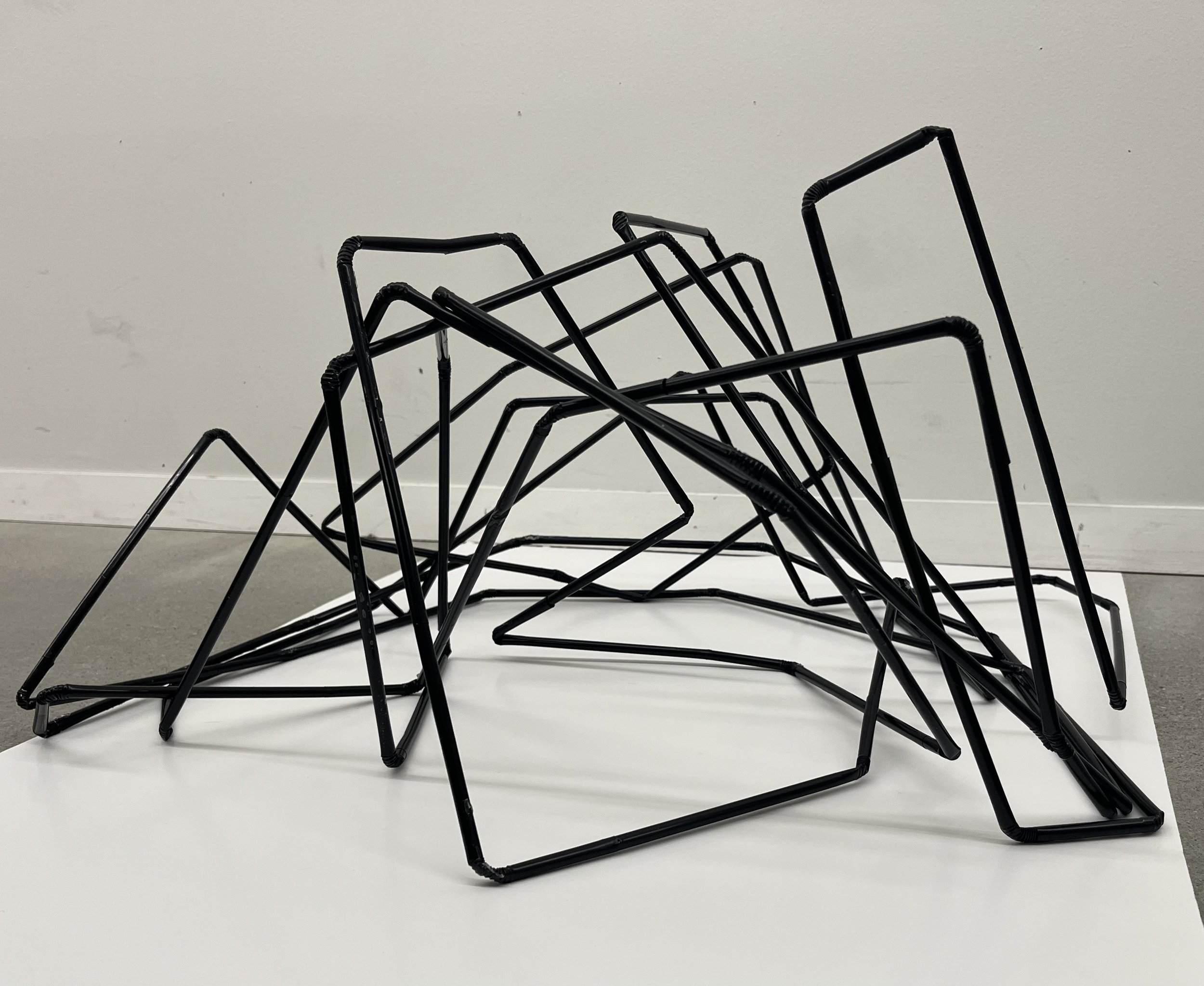Professor Zachary Forney
Through a series of related design exercises, this course explores human scale and the ways human beings perceive three-dimensional objects and spaces. Engages students in reading, writing, research and reflection about scale and perception in architecture.
David Wellman
Capital Divide
Modeled after a short story I wrote during this studio, “Capital Divide” gives us a glimpse into a futuristic world in which the wealthiest have separated themselves from society and employ a variety of methods to stay separated, most specifically, architecture. The main character in the short story has lived in this divided world his entire life and recently was injured in a horrific work accident resulting in the loss of both of his arms. The only compensation he received was a pair of shiny cybernetic arms under the premise that he must continue to work at that company. However, the arms were faulty, leading to the main character being racked with hallucinations and his underlying hatred for the upper class bubbling up until he finally snaps. The model and plans of my project depict the various “control stations” the upper class put in place after these accidents, with one side of the model being constructed out of rough concrete, crowded with walls of various heights and scaffolding to give it an unfinished look and provide movement through the space, compared to the clean and soft edges of the “wealthy” side. In the perspective view, large skyscrapers, emitting relaxing and almost utopic light, rise out of the middle of the ocean, whereas the shoreline is covered with rough metal shacks and houses. This is the “Capital Divide”.


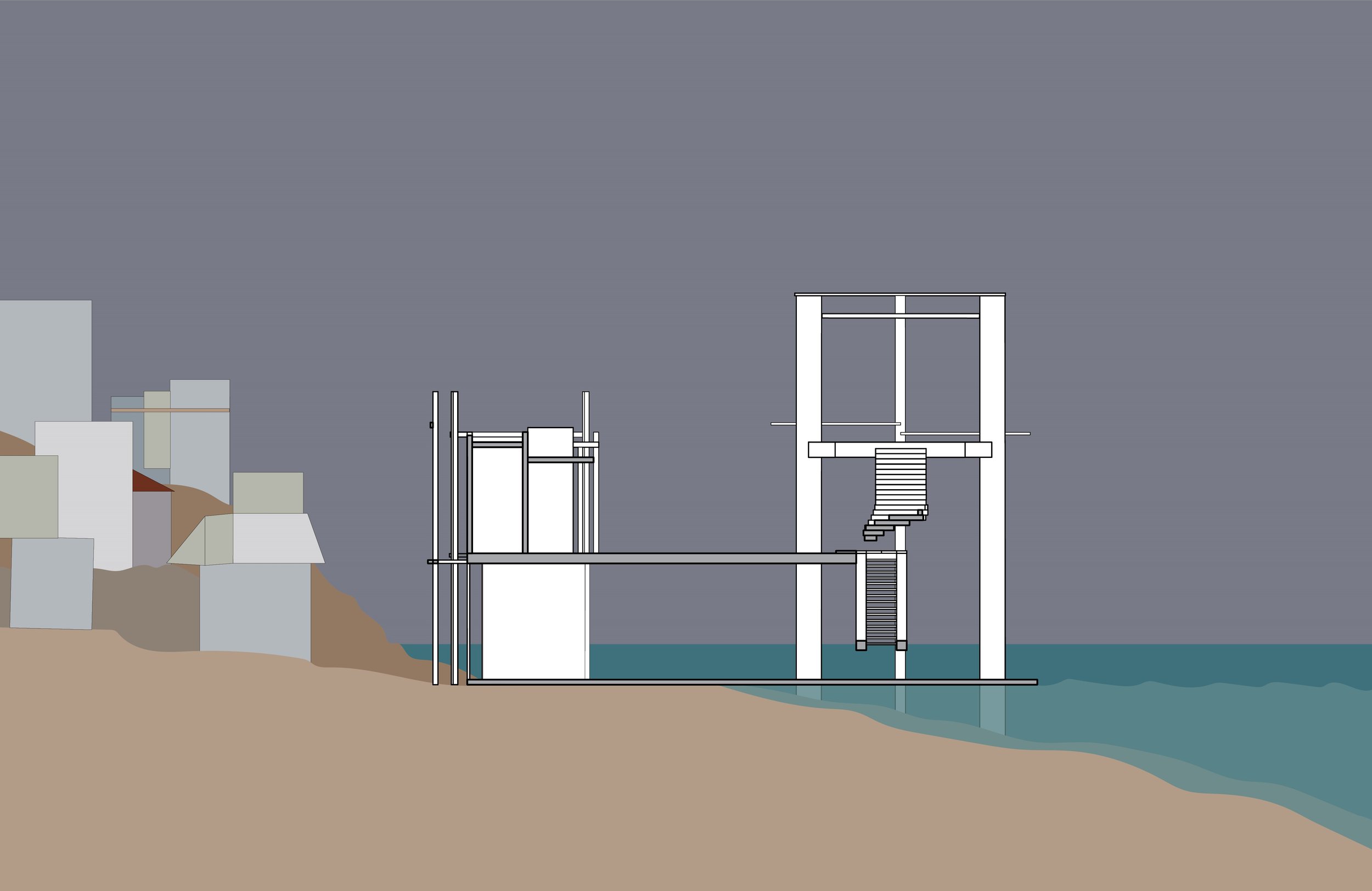
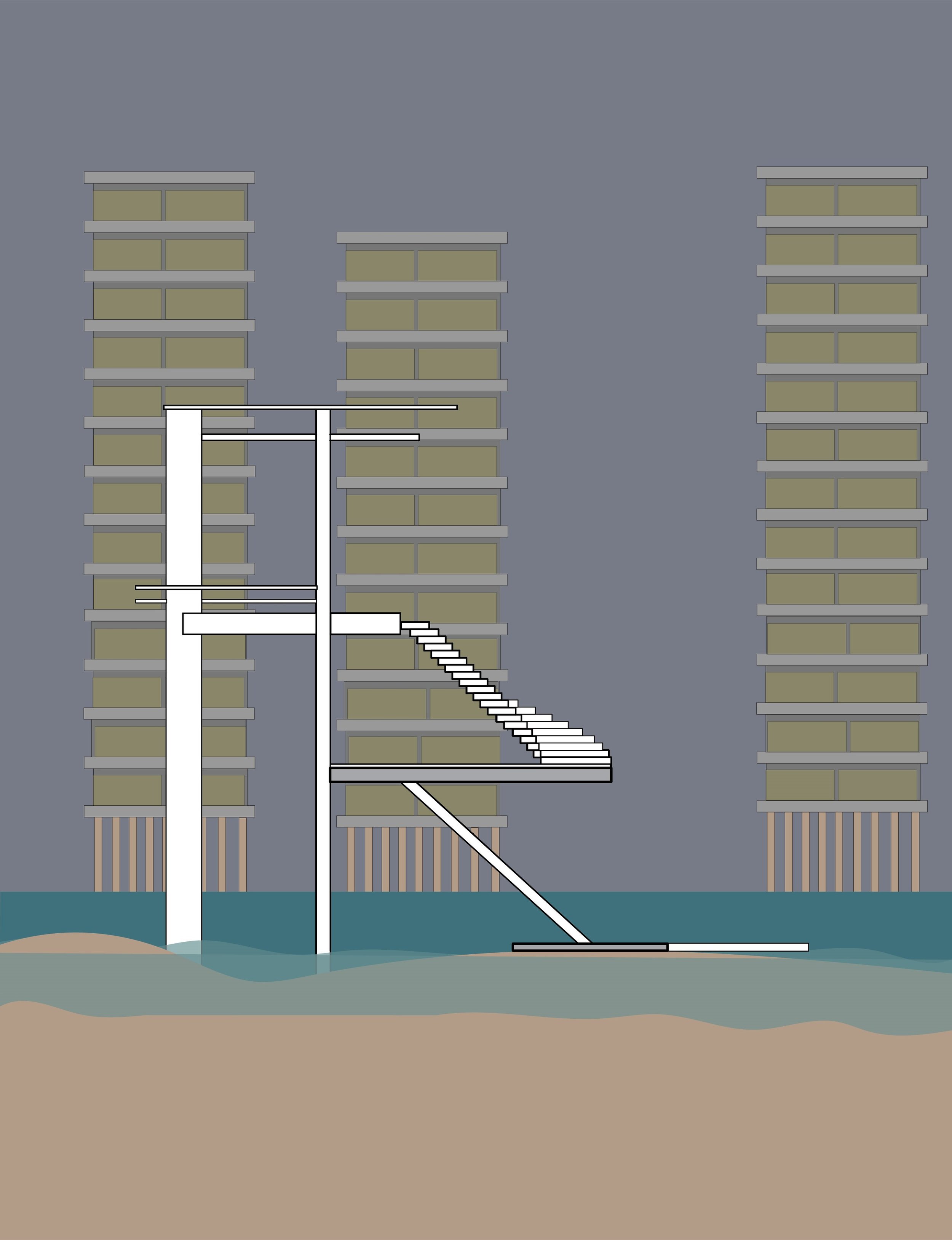
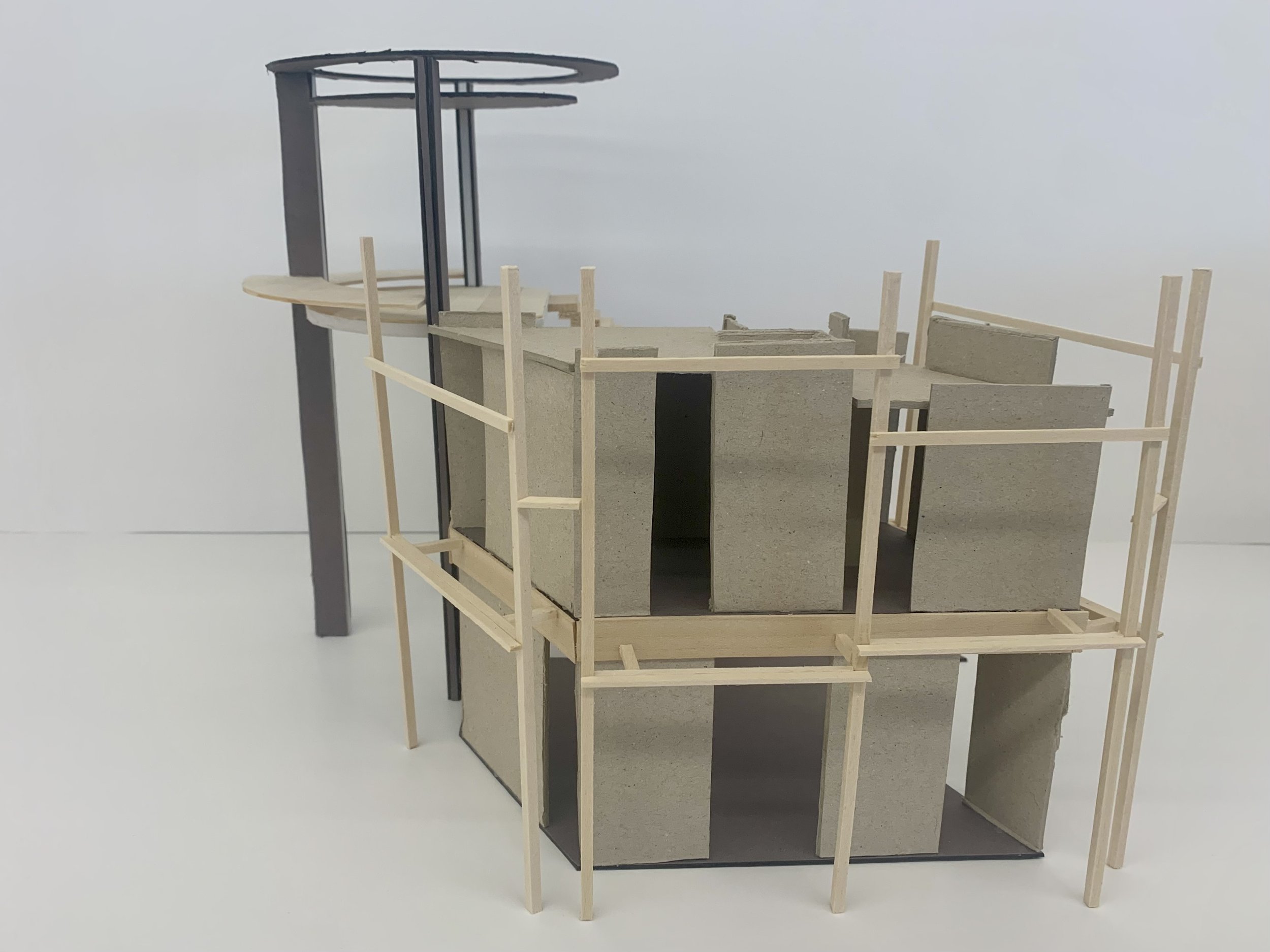
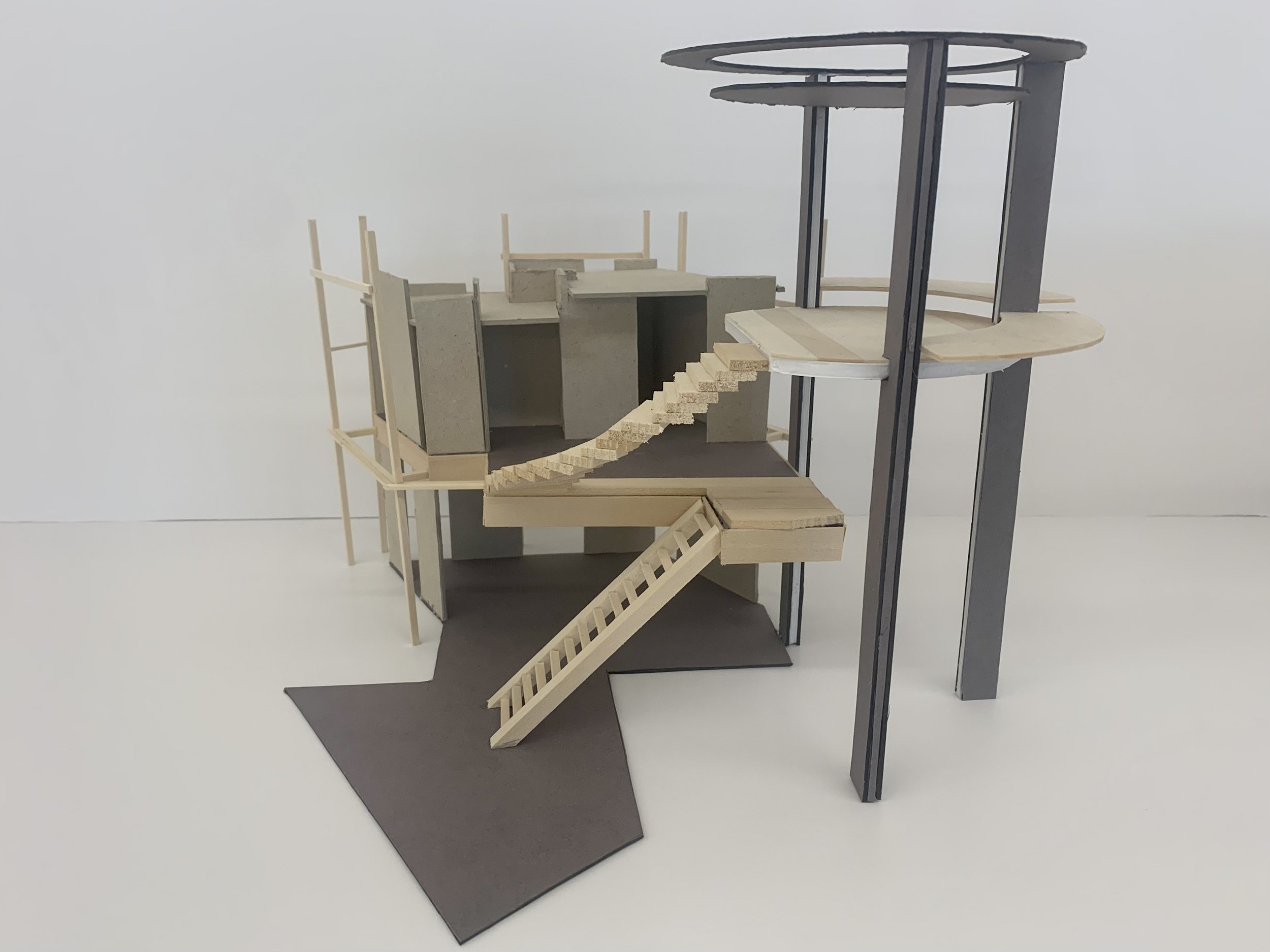
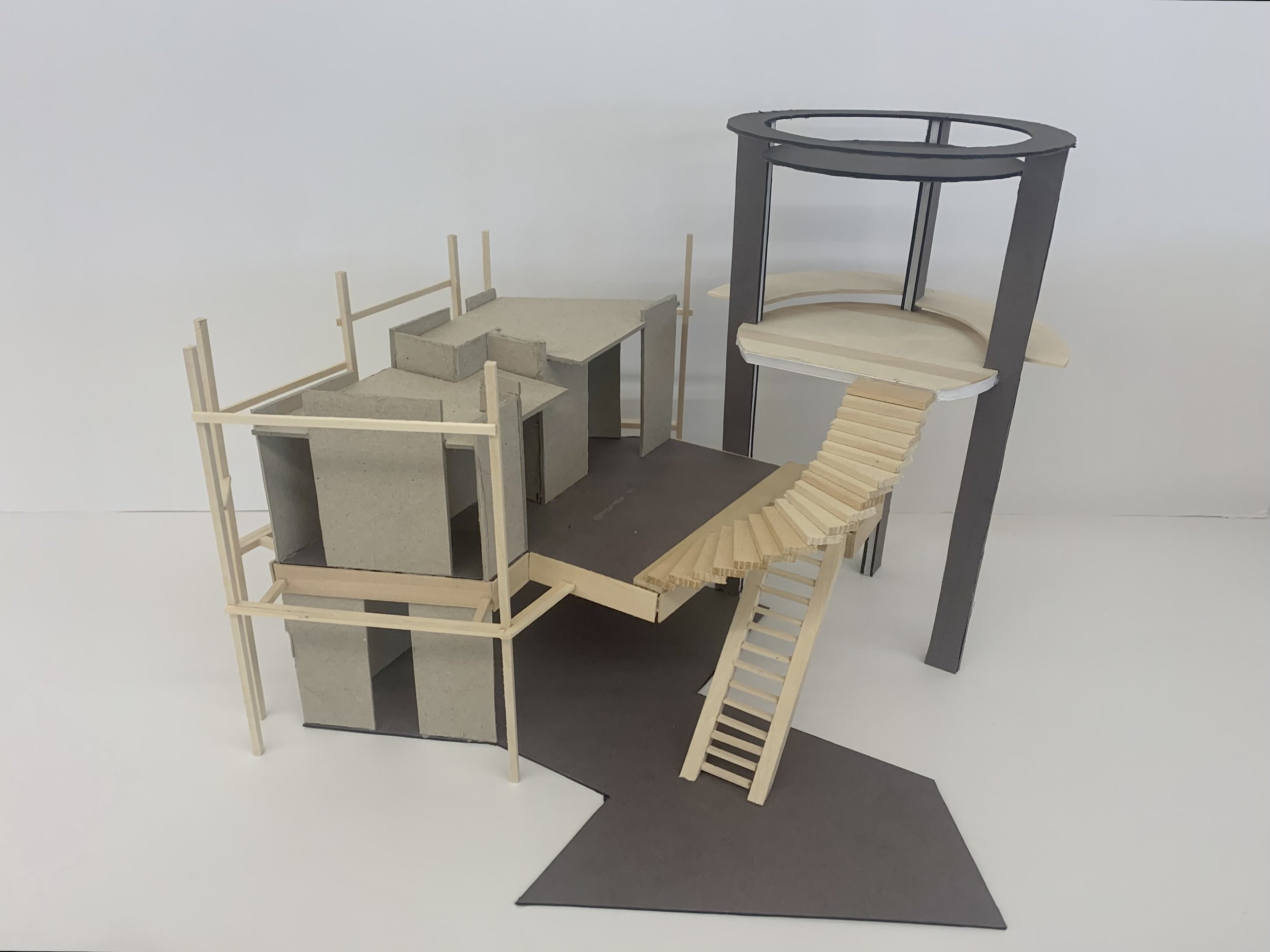
Professor Caleb O'Bryan
Course provides a non‐computational introduction to structures that focuses on: structure as organization, the historical development of structural prototypes, the structural properties of materials. Utilizes lab exercises to introduce students to basic structural principles and to discuss the effect of scientific method, structural engineering and materials science on architectural design.
Fisher Hemwall and Will Mcafee Witherspoon
Lost in the Sauce
In considering the form makings of yesterday there is a technique that should be addressed. Antonio Gaudi inspired the world to use unconventional methods to portray the natural phenomenon of the earth. Rather than utilizing the hanging chains used by Gaudi in his infamous Sagrada Familia; this investigation uses pasta draped over balloons with varying radii to express the pull of gravity. The self-adhesive character of pasta allows the space and form to be realized with little need for additional adhesive. The lasagna was extensively thought through in terms of their cook times and adhesion to the balloons. The thickness of the lasagna gives the structure unique expressions of the balloon curvature as they do not fully encompass the balloons due to their rectilinear shape contrasted on the sphere. The resulting space creates an enclosed atrium for public events of which require a maximization of utility. The vaulting forms from the pasta allow the space to be fully enclosed without the need for vertical supports. This lack of vertical structure allows the space to be used to its fullest extent. The free plan promotes elastic movement for public events taking place within the arcade. Where Antonio Gaudi used more sober conventions, this structure uses whimsy to solve the same problem.
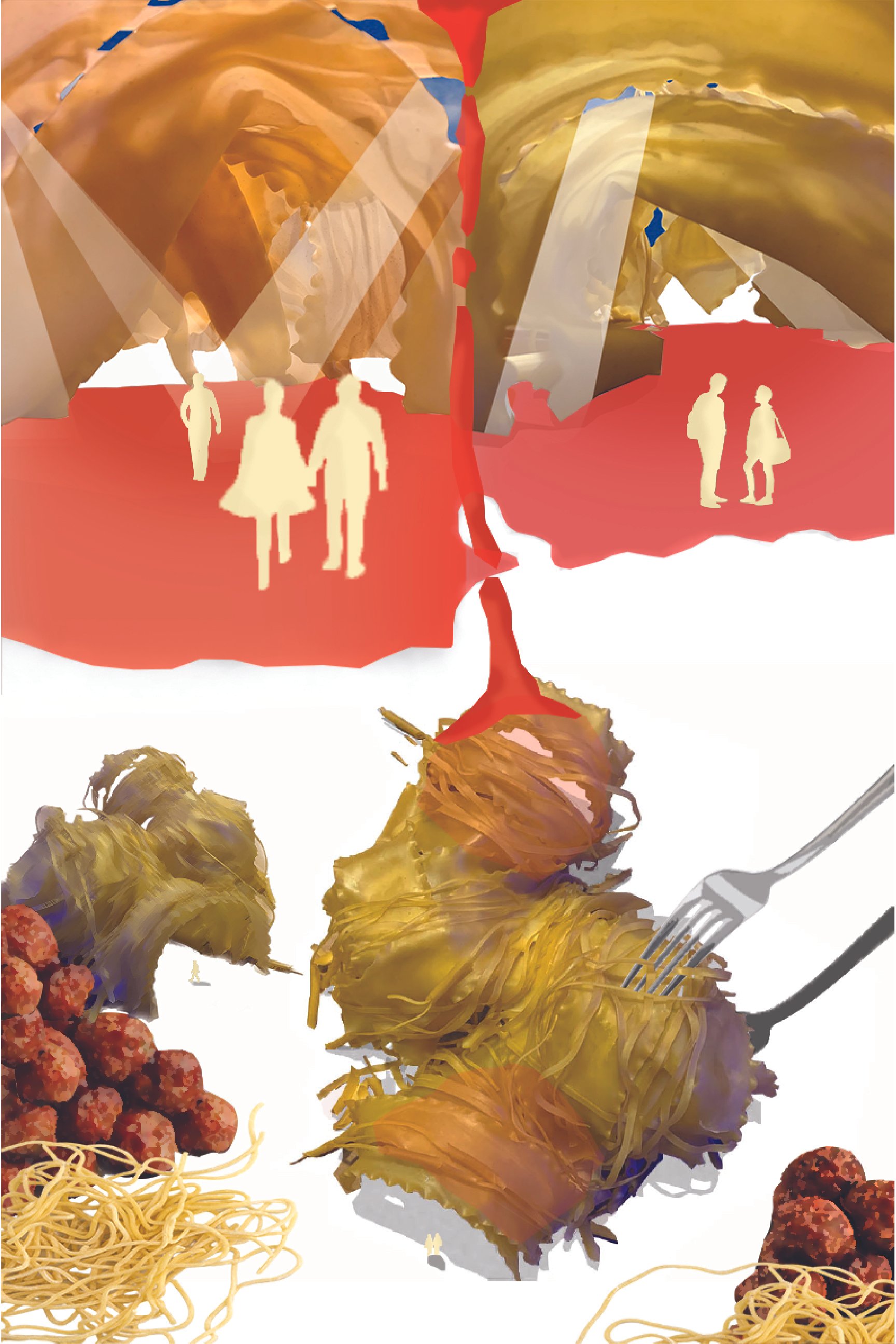



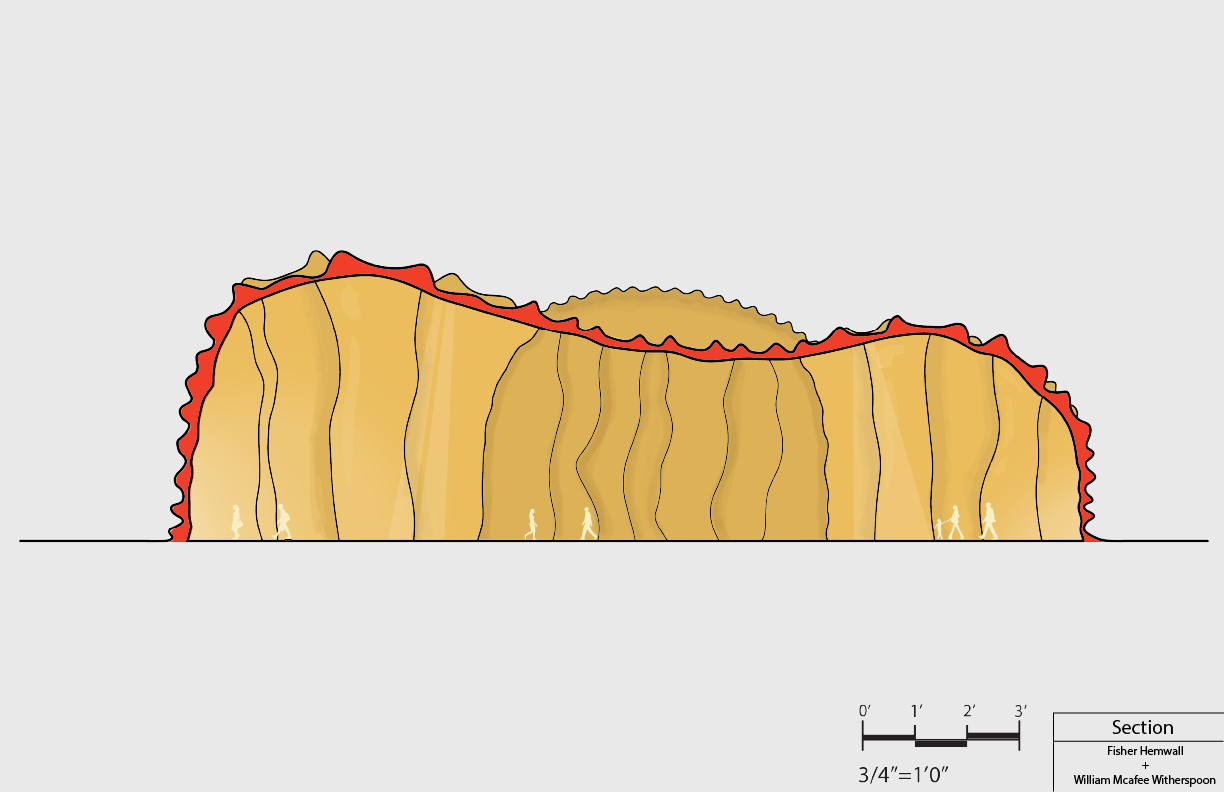

Gabby Lutz and Elizabeth Usenicnik
This little piggy made it to the stage
In collaboration with my lab partner we constructed a form based on the bending active modular form foundation which rests upon the principles of tensegrity, a structural system that uses tension and compression to create a stable and self-supporting structure, which is completed in this model by adapting the connections of plastic straws.The form follows the bend of the straw in tangent with multiples of this identical variable. Plastic bendy straws create a network of tension members, while compression is provided by the weight of the surrounding environment in order to craft the model. When exploring the form and possible applications of the shape that was emerging the utilization as a concert venue fit the found form. Incrementing the natural shape that the connected straws took upon each other, this structure held the potential of a framework to semi-enclose a space. The model solution utilizes plastic bendy straws to create an adaptable, lightweight, and flexible structure which in turn allows for a variety of configurations to be easily modified and accommodate for different types of stage performances; by relying on the module and connections of the straws. In the construction of this shape, the straws slip into each other, which upholds the connections of the straws. Using a pliable membrane structure in-between the framework provides full enclosure while not hampering the adaptability and flexibility of the space.
